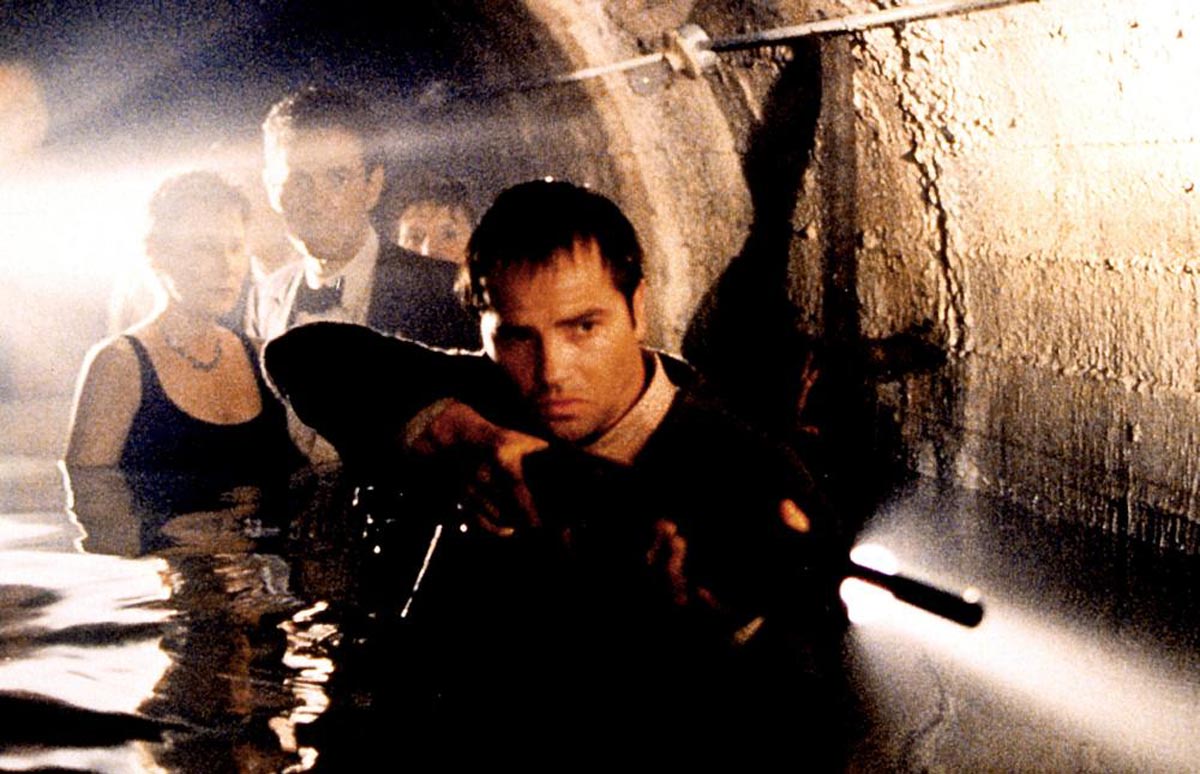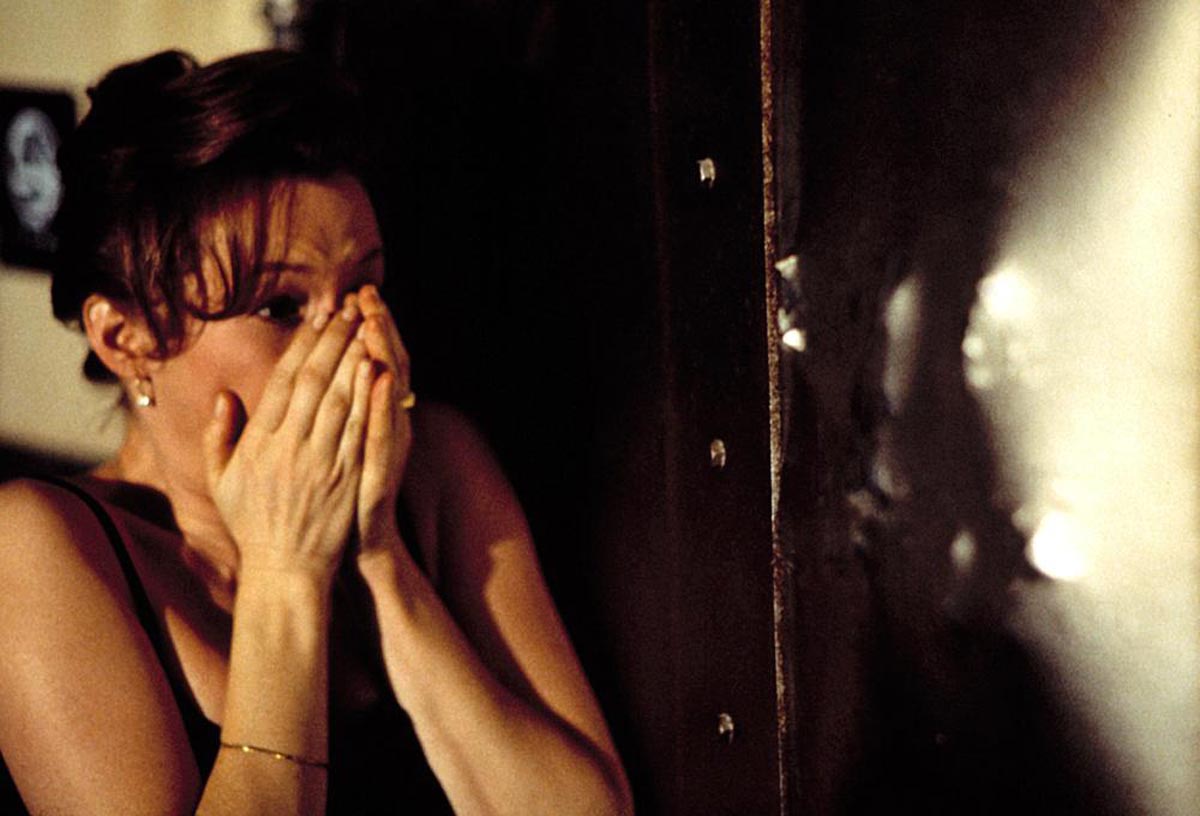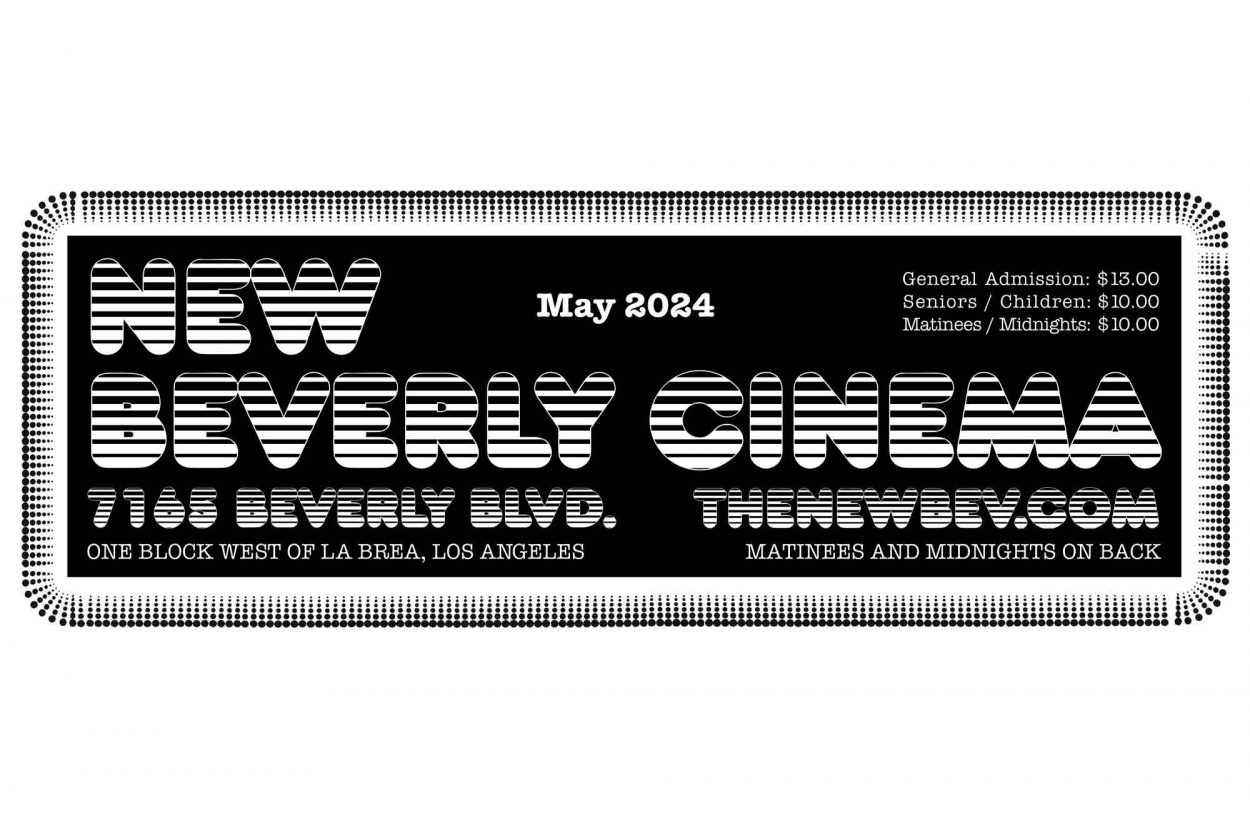It is the general consensus of many a horror fanatic that the 1990s were an odd time for the genre. Horror cinema is a ship that tends to rise and fall on the waves of popular trends and subgenres; look at the films that followed in the wake of any enormous horror hit, and you’ll find a slew of hungry imitators feeding off its discarded chum; Just try counting the number of demonic possession movies in the decade following The Exorcist. Or the number of torture-related films that arose in the wake of Saw. And how many contemporary horror films center on gore-free hauntings, living happy lives as the financially robust children of The Conjuring?
The 1990s were, perhaps, an aimless time for horror. The great slasher franchises of the 1980s were aggressively petering out – both Jason and Freddy met their respective announced demises in the early years of the decade – and there didn’t seem to be a singular dominant trend to take their place. There would be a notable resurgence of slashers following the release of Scream in 1996, but one must remember the irony that film was built on; people knew horror movies, even when they were in a horror movie.
For the most part, the 1990s were a time of throwbacks, experiments, and blasé deconstruction. Horror became less about wild, prurient thrills, and more a means to examine the nation’s anxieties. This was the time wen Wes Craven transformed Freddy Krueger into a literary tool in Wes Craven’s New Nightmare. It was in 1995 that John Carpenter would make his meta-textual horror film In the Mouth of Madness. It was in the 1990s that the the whole of the genre would be deconstructed in hilarious, tongue-in-cheek horror comedies like Sam Raimi’s Army of Darkness, Peter Jackson’s Dead Alive, and Frank Henenlotter’s Basket Case 2. Even The Exorcist would be turned into an existentialist musing.
So the appearance of Peter Hyams’ The Relic into this marketplace seems, from an historical perspective, weirdly bold. The Relic, based on the novel by Douglas Preston and Lincoln Child, is an old fashioned creature feature whose story, monster, characters, and lines of dialogue are culled up from the B-movies quarry of the 1950s, but presented without a hint of irony. This is not a winking goof factory (see 1999’s Lake Placid for that). This is, at this late date, an honest-to-goodness monster movie.
The Relic, playing at the New Beverly on Tuesday, October 17th, on a double bill with Laserblast, is about a monster that, requiring human brains to survive, goes on a rampage during a celebrity gala in the Museum of Natural history in Chicago. A put-upon anthropologist (Penelope Ann Miller) and a cynical cop (Tom Sizemore) will be the ones to discover that the creature is a mutant hybrid of lizard, lion, stag beetle, and human DNA, and they will be the ones to take it down.

The film will involve a lot of dank, wet, underground passages through which our characters pass (it is reported that both Sizemore and Hyams caught the flu because of the damp conditions of the shoot). There are a good number of affable quips, some well-constructed (if clichéd) characters (I’m always a sucker for a well-presented wise-cracking pathologist), plenty of screaming and bleeding and brain-eating, a few quickly-dated effects shots, and one pretty amazing-looking critter. It’s one of the most solid, most serviceable B-movies of the decade.
The creature from The Relic, called the Kothoga, was conceived and designed by the legendary Stan Winston, and he outdid himself. The creature is a chimera-like being with the upper body and mane of a lion, a scaly body, gigantic claws, a whipping tail, and a pair of giant, wicked-looking pincers on its face. And while middling CGI was required to make the Kothoga bound about lightly in long shots, in close-ups it was a fully practical, on-set monster effect the likes of which movies rarely bother with anymore. The Kothoga was realized via a mechanized aluminum frame that would be strapped around an actor, and whose face and lungs were controlled by remote. The monster could blink, breathe, and express itself the way a monster ought.

The late 1990s were a golden time for movie special effects, as it was a time when it seemed all of the tools were still in the toolbox. CGI was being used heavily, but it wasn’t yet cheap or sophisticated enough to nearly create every image in nearly every effects-driven film (as is the mode for most current effects-based blockbusters). Computer effects were used to supplement practical effects, and photographic tricks were being used to their utmost; see James Cameron’s Titanic – released the Christmas after The Relic – for what might be the pinnacle of the era’s special effects. I’m not going to openly declare the effects in The Relic to be among the best of the era – indeed, some of the CGI shots are pretty terrible – but watching it 20 year later, one can appreciate just how great middling special effects on a middle-budget creature feature looked in the 1990s.
By contrast, in the 2010s, if a filmmaker wants to employ a good deal of practical effects in their creature feature, it has to be the result of a special effort to keep the film retro, as studios tend to insist on the more streamlined digital approach. This was evidenced in the 2011 prequel/remake of The Thing. In order to pay homage to the 1982 film, the makers of the prequel wanted to employ the best practical effects they could, working very hard to try to re-create a new version of Rob Bottin’s amazing work. But, as the story goes, Universal Pictures became skittish at the way the effects looked – or perhaps were simply more comfortable with the CGI aesthetic – and insisted the practical effects be erased and replaced with digital effects. The studio’s disregard for great practical creature effects is infuriating to monster fans everywhere.

Perhaps this is a personal bias, but I have felt that practical effects carry with them a small note of unreplaceable sincerity that CGI can only very rarely accomplish (it’s only display, for instance, in staggeringly beautiful sci-fi films like Valerian and the City of a Thousand Planets). This is not to say that The Relic is a wistfully sincere movie – at the end of the day, it’s just a fun monster flick – but for a monster movie, it does have a smattering of authenticity to it. It’s a sincere creature feature that emerged from an identity-strapped decade, presented us with a really cool monster, and left us smiling and clapping and enjoying the carnage.
After The Relic, director Peter Hyams, a longtime workman in Hollywood who photographed many notable sci-fi movies, would go on to direct the Arnold Schwarzenegger hit End of Days and the Tsui Hark stunt vehicle The Musketeer as well as the notorious time-travel bomb A Sound of Thunder. It was maybe the failure of the latter that has kept his directing work at a low ebb ever since.
But for those glorious 110 minutes in 1997, we were treated to the type of popcorn, matinee fun that we no longer had in theaters on a regular basis. Come back with us, and enjoy what ’90s horror had to offer.


